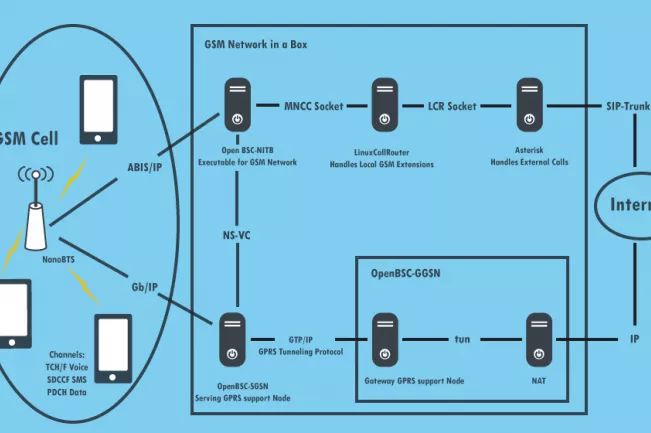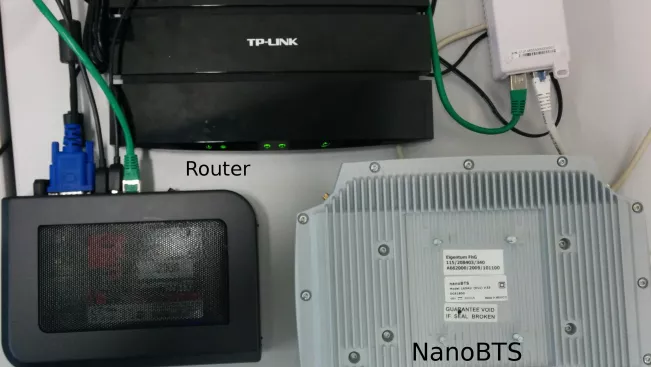Department of Computer Science
GSM in a Box

In rural areas a reliable communication infrastructure is not always available, mainly due to the CAPEX and especially OPEX of traditional operator equipment. A small, cost-effective communication solution provides an alternative to a large scale and expensive GSM-based network provided by a professional carrier or ISP. In cooperation with the Fraunhofer Institute AICOS in Portugal such a solution was established during the ICT4DCC project.
To enable a cost-effective solution to this the communication system should be based on off-the-shelf hardware components and the provided functionalities should be available for a heterogeneous set of client devices.
The functionalities of this system should include local communication with cell phones and landline telephones, the interconnection between cellphones and landline devices and the accessibility to an already deployed public telephone network.

Methods
The system consists of a Linux based system in combination with an ip.access nanoBTS base station. To provide the different communication functionalities several software packages originating from the Osmocom OpenBSC project are used with a few additional software upgrades to enable data communications based on GPRS. Besides of these packages the installation and configuration of a Linux Call Router, an Asterisk server (incl. dialplan and extensions) and a management web interface are realized.
With these configurations it is possible to provide a local GSM network and allow clients to place and receive calls from other subscribers connected to the base station and also to connect with stationary softphones that are registered at the local Asterisk server.
In combination with an Internet connection like it can be established with the WiBACK system at a low cost the systems is capable of even more functionalities. A Sipgate account is used to realise the interconnection to existing public telecommunication networks and even to other cellular network provided by professional carriers. This is realized by a few changes to the configurations of the Asterisk server and the Linux Call Router and the provision of a valid Sipgate account.
Results
It was possible to provide the described functionalities to the system and were considerably evaluated with several test scenarios. The results of this evaluation and a detailed description of the project can be found in the publication linked below.
The contact persons of this project are Markus Kessel and Michael Rademacher.